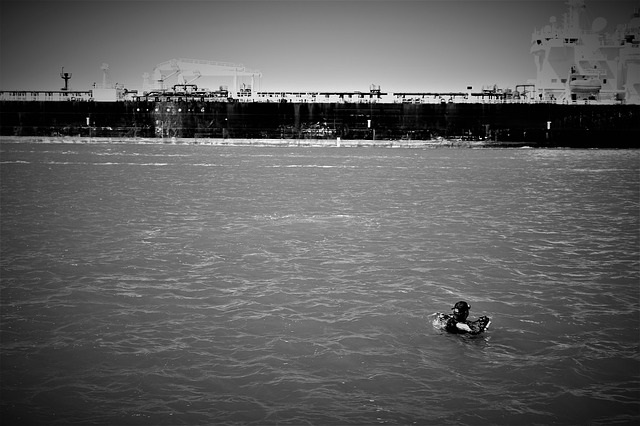MARSS Group2019-09-05 16:16:30
Protecting international shipping and coastal installations against terrorist attack
The recent attacks against international shipping in the Gulf are a reminder to everyone that a threat to the international merchant fleet, is a threat to the global economy.
Why? Because 90% of the world’s cargo, 20% of trade and 25% of oil is transported by sea, making shipping and the ports and terminals they serve integral to all global economic activity.
Ports and terminals are considered part of our critical national infrastructure (CNI) but there are many other CNI sites are also based on the coast, such as oil and gas terminals, desalination plants, and nuclear plants, that are equally at risk.
Whilst shipping is not currently classified as CNI by most governments, there is a very strong case for treating them as such.
All these assets are vulnerable to attacks both above and below the surface.
There are a number of possible attack scenarios and we have seen two of the most likely methods used in the Gulf attacks.
In the first attack in May, two Saudi oil tankers, a Norwegian tanker and an Emirati vessel were damaged near the Emirati port of Fujairah. The perpetrators are said to have infiltrated the port by boat and then used divers to attach limpet mines to four vessels, holing all four vessels.
Whilst unusual, this is by no means the first time this method of attack has be used by terrorists. The Sri Lankan Tamil Tigers or Sea Tigers are probably the pioneers in maritime surface and sub-surface terrorism.
Scuba divers of the Sri Lankan Tamil Sea Tigers sank many small Sri Lankan naval vessels using crude limpet mines, several of which were reputed to be as large as 50 kilos.
In 2017, the UK’s Daily Mail newspaper reported that a senior source within the Royal Navy said that elite British dive teams have been actively working to thwart a terrorist attack on LPG gas carriers entering UK waters.
Intelligence indicated that a terrorist group sought to attack LNG tankers near terminals in England by planting limpet mines. The report states that British military dive teams have been inspecting hulls ever since.
In July 2018 ‘Obtained Intelligence’ alerted the Indian Navy that Terror group Jaish-e-Mohammad may be planning to attack Indian Navy warships using deep sea divers.
Another possible underwater threat scenario is the use of submersibles and semi-submersibles and a growing threat from Underwater Unmanned Vehicles (UUV’s)
Once again, the Tamil Sea Tigers were the pioneers in the use of submersibles, using them in a number of successful attacks on Sri Lankan naval vessels. They are also being extensively used by drug smuggling gangs in the America’s, who have worrying links to terrorist groups.
But the advent of UUV’s probably poses a greatest danger in the future. With very little risk to the operator, these underwater drones can effectively be used for aggressive reconnaissance, as guided torpedoes, to attach limpets or to lay mines on the sea or river bed.
Fast attack boats are the most widely used method of attack and probably pose the greatest threat to date. But jet skis, swimmers and canoeists are also real possibilities.
In October 2000, al Qaeda in Yemen carried out what is probably the most costly and well-known surface attack. A suicide bombing, which killed 17 sailors on the U.S. warship Cole in port of Aden. This attack was carried out by a small fiberglass boat carrying C4 explosives and two suicide bombers and it is estimated that between 180 to 320 kilos of explosive was used.
In 2002, while it was some distance offshore, an explosives laden dinghy rammed the starboard side of French oil tanker Limburg and detonated. The vessel caught fire and approximately 90,000 barrels of oil leaked into the Gulf of Aden. One crew member was killed, and 12 other crew members were injured. The damage to the tanker was around USD$45 million. Al Qaeda claimed responsibility for the attack.
In the most recent incident of this kind, last month in the Gulf, it is thought that Iranian operators used fast attack boats to attach Limpet mines to vessels on the move, causing considerable damage, fires and leading to the crews abandoning ship.
Whilst most of these examples involve attacks on shipping, offshore oil and gas rigs and onshore CNI facilities are equally at risk and it really seems only a matter of time before they are targeted.
So, how do you defend vessels and CNI facilities from these kinds of threats?
NiDAR, from MARSS provides a 360°degree surveillance system integrating multiple sensors including sonar, radar, RF and electro-optics to provide automated monitoring, detection, tracking and classification of objects in the vicinity of a vessel, offshore or coastal facility.
Operating autonomously and discreetly 24/7, NiDAR detects and tracks both known and unknown surface, subsurface and air objects.
Smart software algorithms automatically analyse and rank threats, triggering alerts via the NiDAR Command and Control interface, to notify crew and security personnel as required.
NIDAR allows the crew or operators to deploy automated or manual integrated countermeasures to deter potential approaches and de-escalate threats.
NiDAR is currently operationally installed, protecting a number of unnamed high value vessels and critical infrastructure installations around the world.
View more about NiDAR
